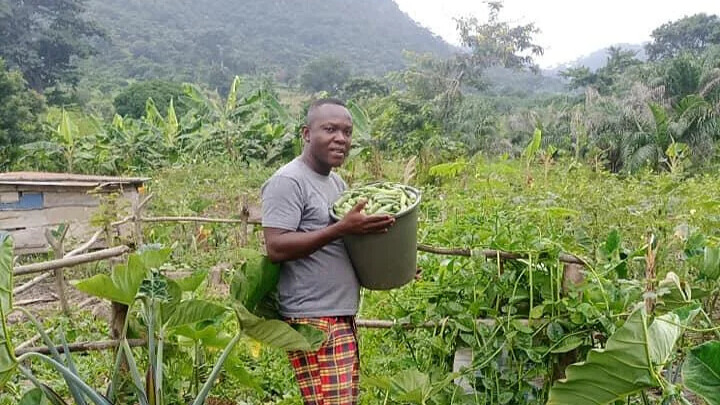Photo: Earth Care permaculture, Ghana
Interview with Dr. Kwaku Onwona-Hwesofour Asante from Ghana (CSIR-Crops Research Institute)
Thank you for speaking with us. To start, can you give us an overview of the current state of agroecology in Ghana?
Agroecology in Ghana is steadily growing. It’s not just seen a farming technique—it’s becoming a movement. We see increasing interest from farmers, researchers, and even policymakers. Across regions like Volta and Oti, for example, we’ve engaged over 300 farmers, many of whom are eager to adopt agroecological practices, especially input reduction. There’s growing concern about the harmful effects of chemicals in food and the environment, which is pushing farmers to explore alternatives.
What about traditional or indigenous practices—do they play a role in this movement?
Very much so. In the Northern regions—places like Mamprusi Manduri and Talensi—there’s strong alignment between agroecological principles and indigenous knowledge. Farmers there already value soil conservation and long-term productivity. We also encourage them to reintroduce underused or near-extinct local crops, which not only supports biodiversity but also strengthens local food systems.
In the Ashanti Region, for instance, there’s a community called Nframa in the Atebubu-Wiase ecological landscape that has long practiced organic farming. They protect their soil and forests, avoid herbicides and post-harvest burning and refrain from using heavy machinery. Communities like these are excellent reference points for agroecology in Ghana.
How are young people engaging with agroecology? Are they showing interest in farming careers?
Many young people are interested—but they face serious barriers. These include the perception that farming is labor-intensive and unprofitable, their limited access to land and capital, and a lack of hands-on technical education.
However, through our projects, we’ve seen that when youth are introduced to the business and innovation side of agroecology—especially the circular economy—they get excited. We work on integrating waste into productive use, like turning animal and crop waste into soil enhancers or new products. This changes their perspective: they see farming as a business, not just labor.
What strategies do you think are most effective in bringing more youth into agroecology?
First, we need mass education to change the narrative about farming. Then, training is key—especially on value chains, crop diversification, and how different farming components interact.
We also need better access to finance and secure land tenure in a context like Ghana where land is mostly owned by traditional authorities.
Finally, we must embrace innovation. Even though agroecology builds on indigenous practices, it doesn’t reject appropriate technologies. For example, we promote integrated soil fertility management and avoid overuse of inorganic fertilizers, which can still harm the environment if mismanaged.
Are there any current government initiatives supporting youth involvement in agriculture?
There are several. The Youth in Agriculture Programme offers training and small loans. There’s also the National Youth Policy, which runs through 2032 and includes specific support for agricultural engagement.
One of the biggest programs has been Planting for Food and Jobs, which has entered its second phase. Another notable initiative is the Harnessing Agricultural Productivity and Prosperity for Youth (HAPPY) project, which has already involved over 1,000 youth in value chains like rice, poultry, tomato, and soybean.
Plus, at the institutional level, the Ministry of Food and Agriculture has a dedicated Agroecology Desk Officer. The Ministry of Environment, Science and Technology also works closely with us. Also, Ghana’s Council for Scientific and Industrial Research (CSIR) contributes through its 13 institutes, developing practical innovations for farmers.
What would you say is the biggest contribution agroecology can make for Ghana’s youth?
Agroecology offers the youth a path to entrepreneurship and environmental stewardship. It enables them to create livelihoods that are both sustainable and profitable. They learn to see the bigger picture: soil health, economic diversification, biodiversity, circular economy, and market value.
Agroecology helps youth move from dependency to self-sufficiency, all while protecting the ecosystems they rely on. It’s a way to reimagine agriculture—not just as survival, but as opportunity.
Find out more:
CSIR-Crops Research Institute
Young People in Agriculture and Environmental Sciences receive training on Agroecology and Circular Economy
MyJoyOnline
Farmers in Ashanti Region empowered through agroecology innovations
ACE4ES (Agroecology and Circular Economy for Ecosystem Services)
ACE4ES (Agroecology and Circular Economy for Ecosystem Services)
Multicultural Technology Park (MTP)

